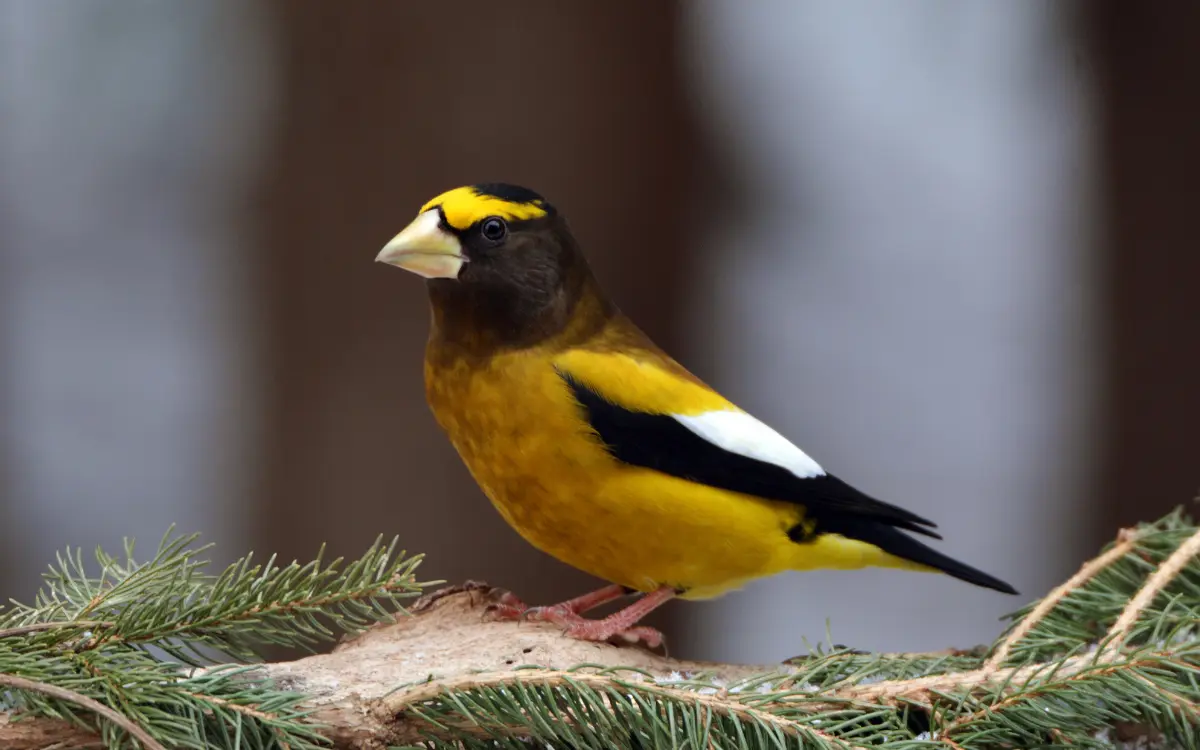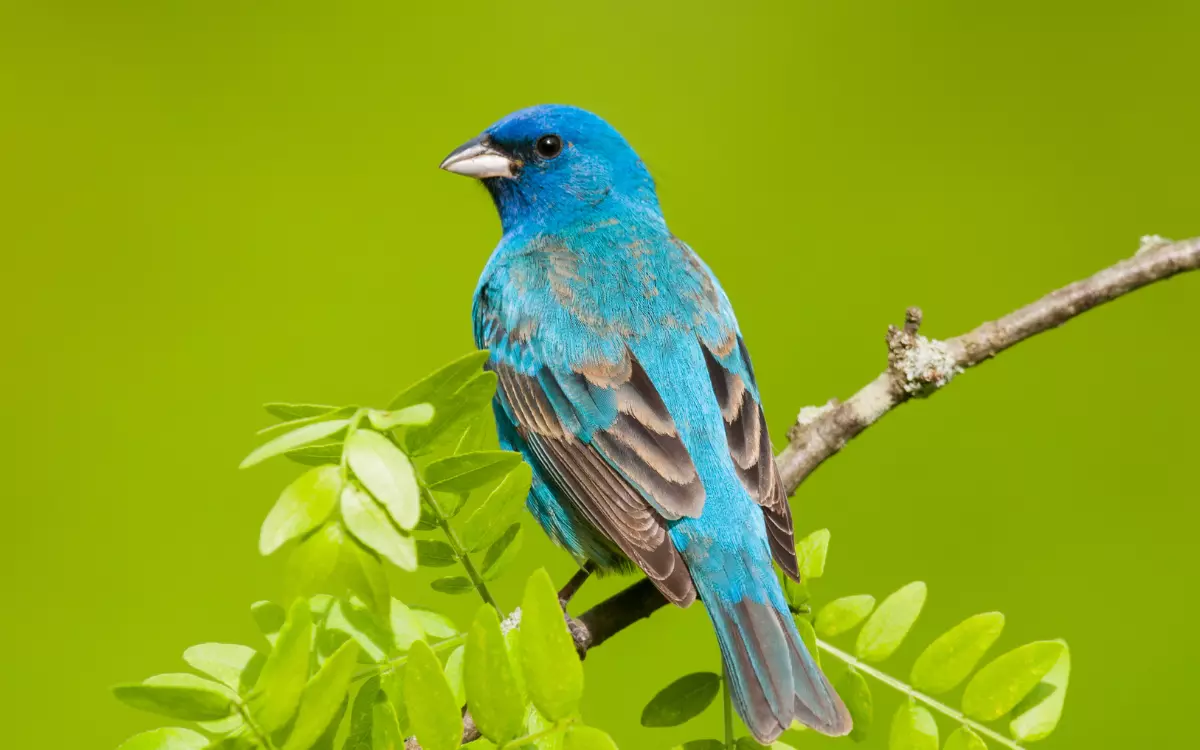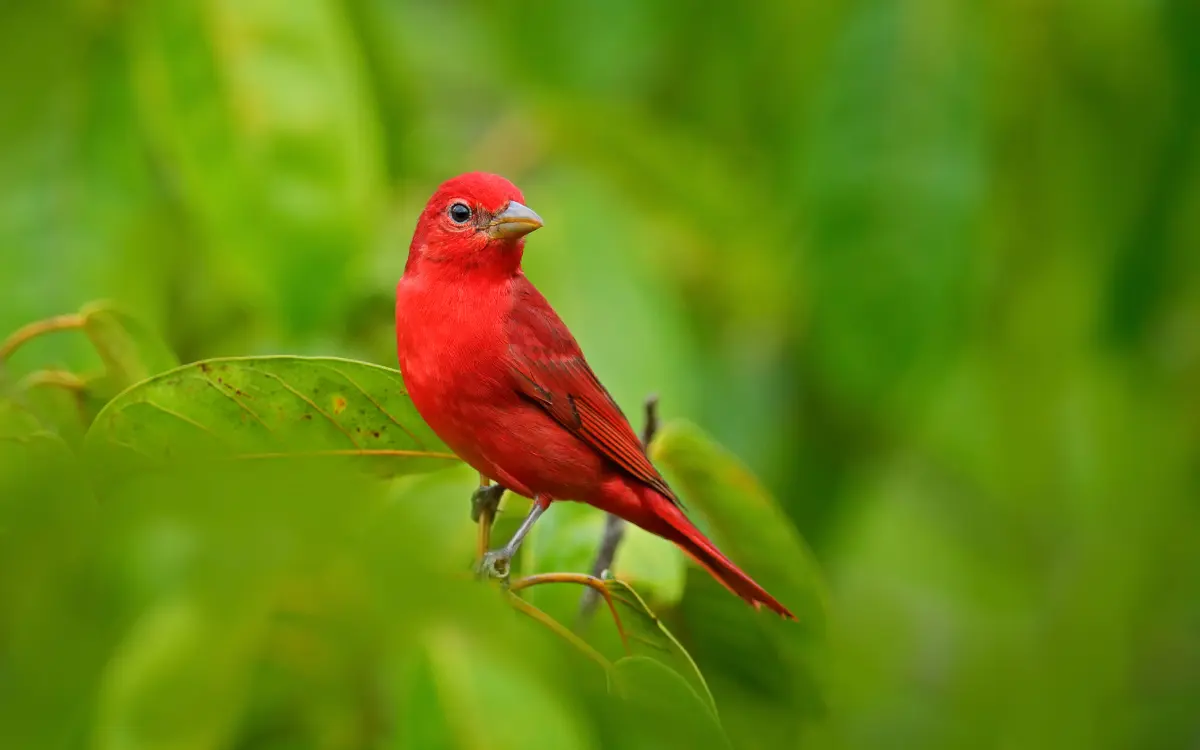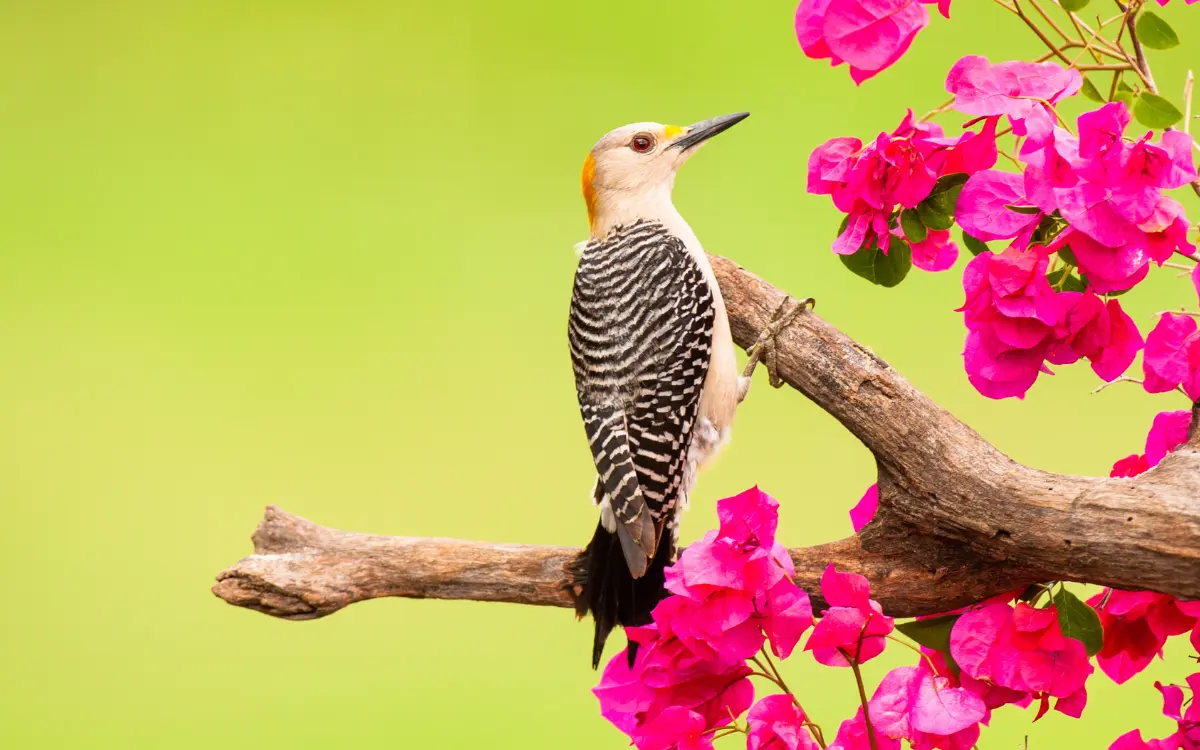34 Shorebirds of Texas: Identification Guide
Texas is one of the top places in North America to spot shorebirds. With a mix of coastline, wetlands, prairies, and inland lakes, the state attracts dozens of species some that live here year-round and others just passing through. This guide covers all the shorebirds you’re likely to encounter in Texas, grouped by family and type, with short ID tips and habitat notes to help birdwatchers of all levels.
1.American Avocet (Recurvirostra americana)

With its long bluish-gray legs and distinctively upturned black bill, the American Avocet is one of the most graceful shorebirds in Texas. During breeding season, its head and neck turn a soft rusty orange, contrasting beautifully with its black-and-white back. Avocets are often seen sweeping their bills side to side through shallow water as they feed in salt flats, estuaries, and marshes.
Quick Facts:
- Found in: Coastal lagoons, marshes, and inland saline flats
- Feeding style: Sweeps bill side-to-side in water
- Best season to see: Spring through fall, especially during migration
2.Black-necked Stilt (Himantopus mexicanus)
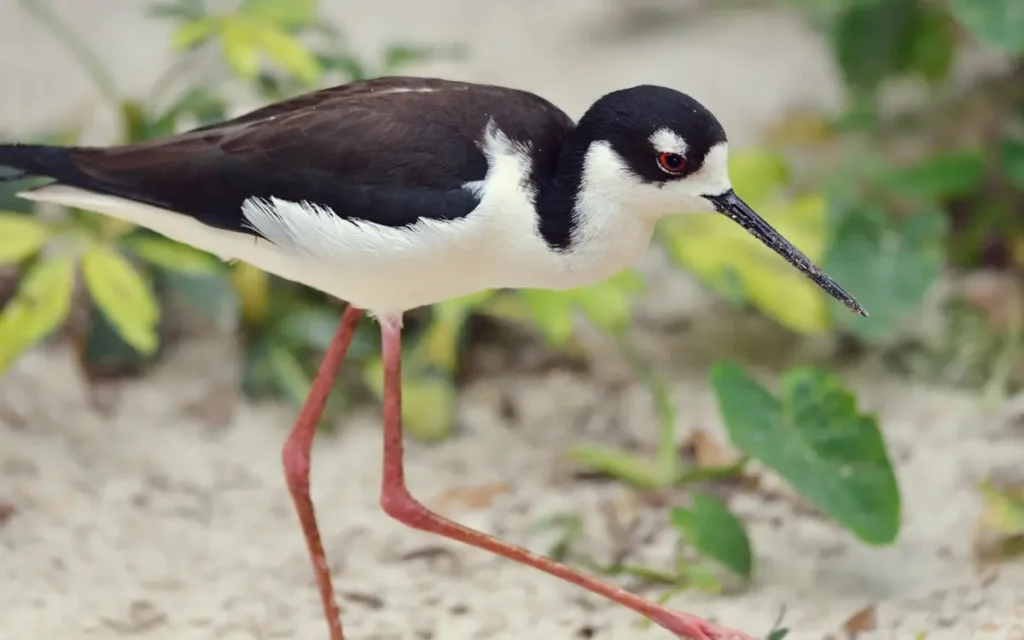
This elegant shorebird is easy to spot with its slender body, black-and-white plumage, and bubblegum-pink legs. The Black-necked Stilt is common in shallow freshwater and saltwater wetlands across Texas. It forages by picking at insects and small aquatic creatures while wading through shallow water, often moving in small groups. Their loud calls and striking appearance make them a favorite among birdwatchers.
Quick Facts:
- Found in: Marshes, flooded fields, and coastal flats
- Behavior: Social; often seen in pairs or small flocks
- Distinct trait: Extremely long pink legs
3.Black-bellied Plover (Pluvialis squatarola)

The largest of the plovers found in Texas, the Black-bellied Plover sports a bold black belly and face during breeding season. In winter, it turns more subdued gray, blending in with coastal shorelines. These plovers favor mudflats and beaches, where they feed on insects, worms, and crustaceans. They’re usually solitary or found in small groups, and they’re wary—quick to flush when approached.
Quick Facts:
- Habitat: Coastal mudflats, estuaries, and beaches
- Seasonal look: Bold black markings in spring, gray in winter
- Behavior: Often alone or in small numbers
4.Semipalmated Plover (Charadrius semipalmatus)

This small, round plover is frequently seen during migration in Texas. It has a single dark neck ring, orange legs, and a stubby black bill. Semipalmated Plovers forage on open mudflats and sandy beaches, where they peck for worms and tiny crustaceans. Despite their small size, they’re tough travelers—migrating thousands of miles between the Arctic and South America.
Quick Facts:
- Migration: Seen mostly during spring and fall
- Key ID: One neck ring and bright orange legs
- Behavior: Fast, darting movements on open shore
5.Piping Plover (Charadrius melodus)

The Piping Plover is a rare and federally threatened species. This tiny, pale plover is often spotted on undisturbed sandy beaches and flats. It has a short, stubby orange bill with a black tip and a faint black neck ring. Because of its vulnerable status, nesting areas are often marked and protected during breeding season along the Texas coast.
Quick Facts:
- Conservation: Federally threatened, protected nesting areas
- Look for: Pale body, short orange bill, quiet demeanor
- Best spots: Barrier island beaches and salt flats
6.Wilson’s Plover (Charadrius wilsonia)

Stockier than most small plovers, Wilson’s Plover has a large head, a thick black bill, and a single broad black chest band. They prefer sandy coastlines and salt flats where they feed on small crabs and marine invertebrates. Though not as numerous as Killdeer or Semipalmated Plovers, Wilson’s Plovers breed along the Texas Gulf Coast in the warmer months.
Quick Facts:
- Habitat: Gulf beaches, dunes, and tidal flats
- Unique trait: Large, strong bill used for crab-hunting
- Season: Spring and summer nesting along the coast
7.Snowy Plover (Charadrius nivosus)

The Snowy Plover is a tiny, pale shorebird that blends effortlessly into sandy beaches and dry flats. It has dark legs, a short black bill, and light brown upperparts. Snowy Plovers are quiet and elusive, often seen standing still or scurrying across the sand. In Texas, they nest on remote coastal areas, where their nests are simple scrapes in the sand.
Quick Facts:
- Preferred habitat: Dry sandy beaches, salt pans, and lagoons
- Nesting: Ground-nesting with camouflaged eggs
- Appearance: Pale, almost ghost-like with dark patches on the face
8.Killdeer (Charadrius vociferus)

Killdeer are among the most widespread and recognizable shorebirds in Texas. Their loud “kill-deer” call, double black chest bands, and long legs make them easy to identify. Although classified as a shorebird, they are often found far from water—on golf courses, gravel roads, and fields. They famously perform a “broken-wing” act to distract predators from their nests.
Quick Facts:
- Found in: Fields, driveways, pastures—not just shores
- Defense tactic: Fakes injury to lure threats away from nest
- Vocal: Very noisy, especially during breeding season
9.Greater Yellowlegs (Tringa melanoleuca)
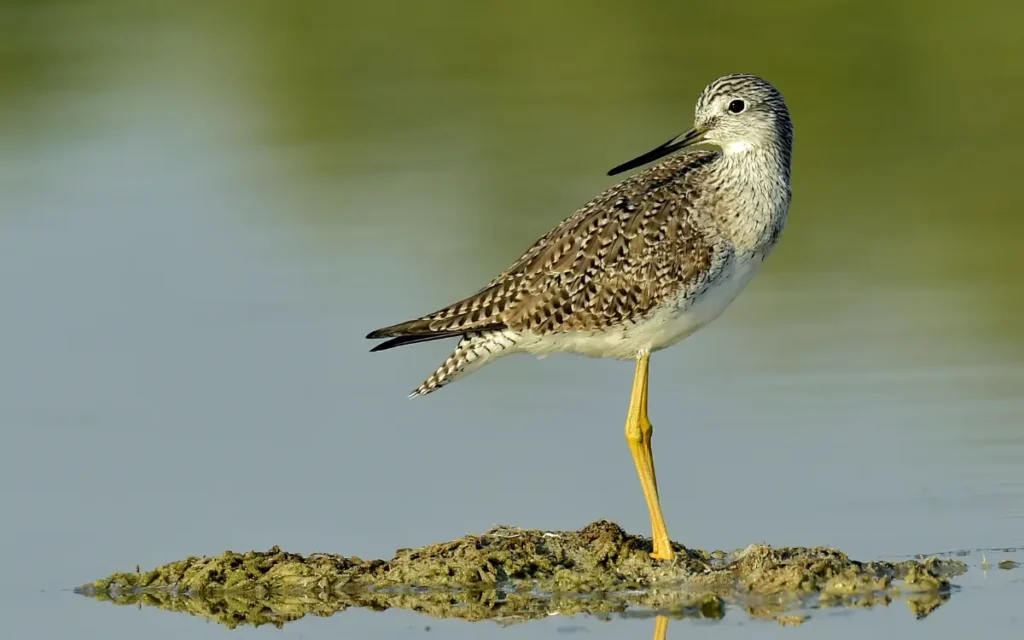
This tall, long-legged sandpiper is active and vocal, often seen wading in freshwater marshes and estuaries. It has bright yellow legs and a long, slightly upturned bill. Greater Yellowlegs are frequently mistaken for their smaller cousin but can be separated by their size, longer bill, and louder, clearer call.
Quick Facts:
- Call: Sharp and loud—typically 3 clear whistles
- Size: Taller than most sandpipers; long-legged appearance
- Habitat: Freshwater wetlands, flooded fields, and coastlines
10.Lesser Yellowlegs (Tringa flavipes)

Almost identical to the Greater Yellowlegs but smaller, with a shorter and straighter bill. Lesser Yellowlegs are agile feeders, darting and picking through shallow water for small invertebrates. They migrate through Texas in large numbers and are often seen alongside other shorebirds in temporary wetlands.
Quick Facts:
- ID tip: Slimmer and quieter than Greater Yellowlegs
- Season: Especially abundant during spring and fall migration
- Preferred habitat: Shallow ponds, flooded fields, and edges of lakes
11.Solitary Sandpiper (Tringa solitaria)
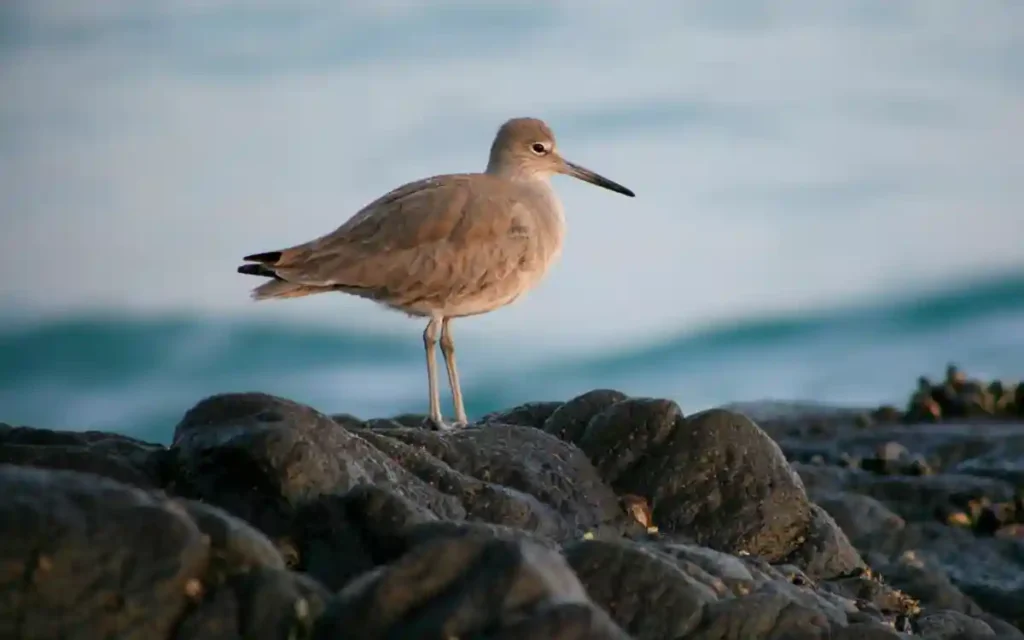
As its name suggests, this bird is often found alone. It has dark upperparts with fine white spots and a white eye ring. Unlike many other sandpipers, Solitary Sandpipers prefer wooded ponds, ditches, and inland wet areas. They’re excellent indicators of healthy freshwater ecosystems.
Quick Facts:
- Foraging style: Active, methodical movements through quiet waters
- Best seen: During spring migration in wooded or inland wet spots
- Unique behavior: Nest in old songbird nests in trees (rarely in Texas)
12.Willet (Tringa semipalmata)

Willets appear rather plain when standing still—large, grayish shorebirds—but they become striking in flight with bold black-and-white wing patterns. They are year-round residents along the Gulf Coast and are common on beaches, mudflats, and salt marshes. Willets are often heard before seen, thanks to their sharp, ringing calls.
Quick Facts:
- Best identifier: Black-and-white wing stripes in flight
- Common in: Beaches, bays, and salt marshes
- Year-round presence: Seen throughout all seasons in Texas
13.Spotted Sandpiper (Actitis macularius)

This small, active sandpiper is best known for its teetering tail and distinctive spots during breeding season. Found along rivers, lakes, and streams, the Spotted Sandpiper walks with a constant bobbing motion. Outside of breeding season, the spots vanish, but the behavior remains a good clue.
Quick Facts:
- Movement: Always teetering its tail up and down
- Breeding look: Bold dark spots on the underparts
- Preferred habitat: Riverbanks, lake edges, and rocky shores
14.Upland Sandpiper (Bartramia longicauda)

A shorebird that prefers grasslands over water, the Upland Sandpiper is long-necked with large eyes and a small head. It’s often seen standing erect in pastures and prairies, where it feeds on insects. This bird is a summer breeder in northern Texas and is best found in open fields, often far from water.
Quick Facts:
- Habitat: Dry prairies, pastures, and airfields
- Behavior: Upright stance and short, whistled calls
- Seasonal: Seen mostly in spring and summer
15.Whimbrel (Numenius phaeopus)

The Whimbrel is a medium-sized shorebird with a long, downcurved bill and bold head stripes. These migrants pass through Texas in spring and fall, stopping at mudflats, beaches, and salt marshes to refuel. Their curved bill is perfect for probing into the sand for crabs and marine worms, especially along the Gulf Coast.
Quick Facts:
- Distinctive trait: Long curved bill and striped crown
- Season: Most common during migration (spring/fall)
- Habitat: Mudflats, estuaries, and salt marshes
16.Long-billed Curlew (Numenius americanus)
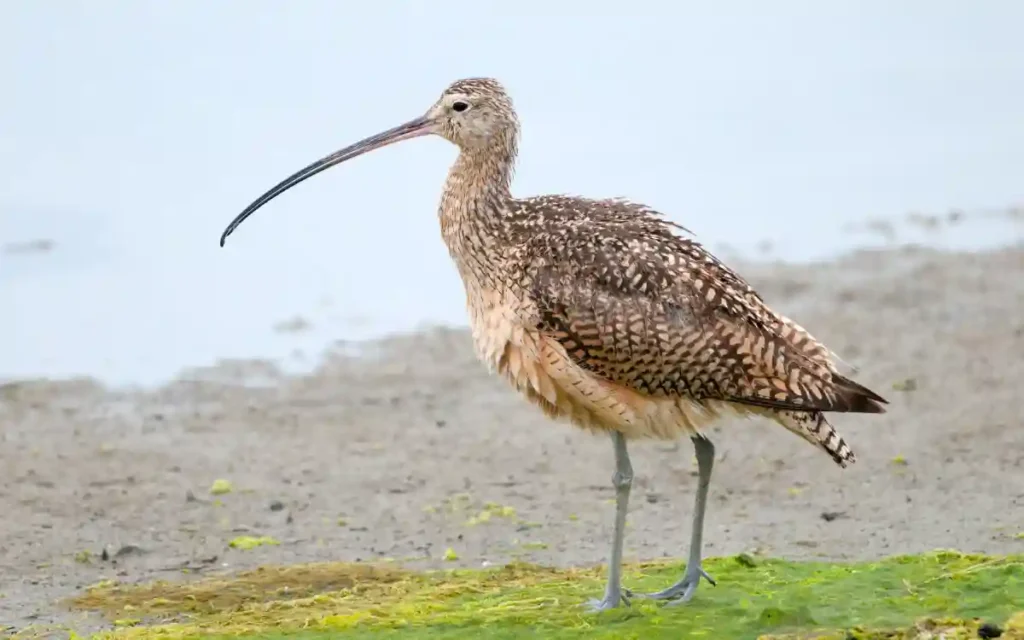
The Long-billed Curlew is the largest shorebird in North America and a real standout with its comically long, downcurved bill. It favors open fields, prairies, and coastal areas, especially during migration and winter. Its cinnamon-colored underwings flash in flight, and it uses its bill to dig deep for crustaceans and insects.
Quick Facts:
- Size: Largest North American shorebird
- Feeding: Probes deep in mud or soil for prey
- Found in: Coastal flats, inland grasslands, and estuaries
17.Marbled Godwit (Limosa fedoa)

This tall, cinnamon-colored shorebird has a slightly upturned, two-toned bill. Marbled Godwits are often seen along the Texas coast during migration and winter, where they forage by probing the mud for worms and insects. In flight, their large wings and golden underparts are especially eye-catching.
Quick Facts:
- Unique features: Long upturned pink-and-black bill
- Seen in: Tidal mudflats, salt marshes, and sandy shores
- Migration: Spring and fall, with some overwintering along the coast
18.Hudsonian Godwit (Limosa haemastica)

A rarer sight in Texas, the Hudsonian Godwit is a sleek shorebird with a long bill and reddish underparts during breeding season. It undertakes one of the longest migrations among shorebirds, flying from the Arctic to South America. In Texas, it’s mainly seen during migration at select wetlands.
Quick Facts:
- Migration: Long-distance flyer with rare Texas stopovers
- Breeding look: Rufous belly and barred back
- Best time: Spring and fall migration windows
19.Ruddy Turnstone (Arenaria interpres)

Compact and energetic, the Ruddy Turnstone is known for flipping over rocks, shells, and seaweed to find insects and crustaceans—hence the name. In breeding plumage, it has bold black-and-white patterns with rich chestnut tones on the back. Along the Texas coast, it’s often found on rocky or shell-covered shorelines, especially during migration.
Quick Facts:
- Feeding style: Flips debris to uncover prey
- Appearance: Striking black, white, and rufous colors
- Best places: Jetty rocks, oyster beds, and beaches
20.Red Knot (Calidris canutus)
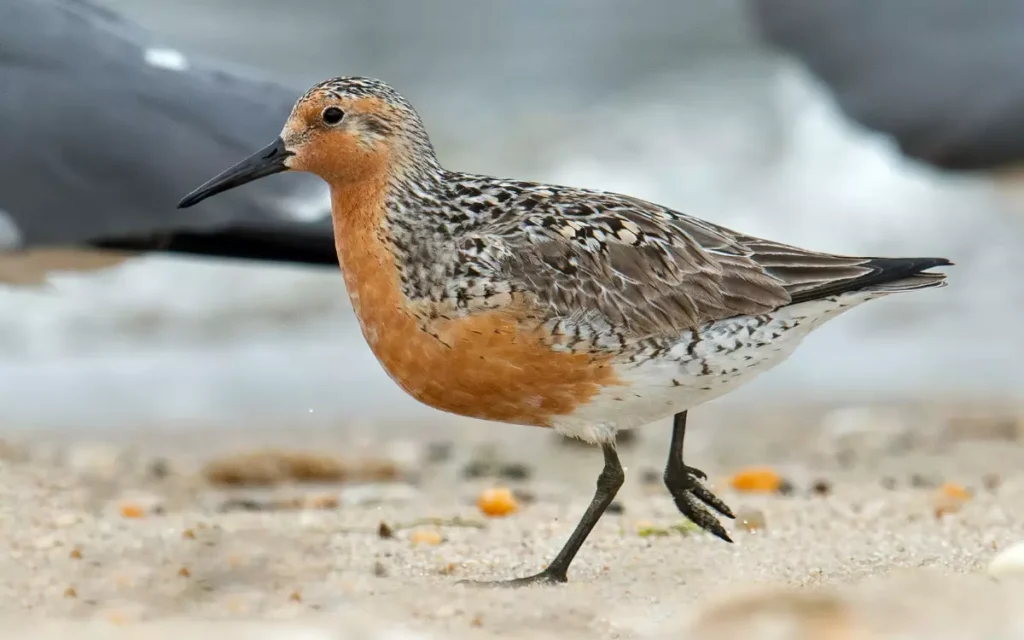
The Red Knot is a chunky sandpiper famous for its incredible long-distance migration. Breeding adults sport a beautiful brick-red breast and face. Though not as common as other shorebirds in Texas, they stop along the Gulf Coast during spring and fall, feeding heavily before continuing their journey.
Quick Facts:
- Conservation: Near-threatened due to habitat loss
- Notable trait: Reddish plumage during spring
- Migratory path: One of the longest of any shorebird
21.Sanderling (Calidris alba)

Sanderlings are small, pale sandpipers that love chasing waves on sandy beaches. Their snowy-white underparts and gray upperparts make them easy to spot. They move in sync with the surf, running back and forth as the tide comes in and out, quickly probing for tiny invertebrates. In winter, they’re among the most common shorebirds along Texas’s Gulf beaches.
Quick Facts:
- Common habitat: Sandy shorelines and ocean beaches
- Movement: Fast runners that follow retreating waves
- Plumage: Very pale with black legs and bill
22.Dunlin (Calidris alpina)

Dunlins are medium-sized peeps with a slightly drooping bill and a distinctive black belly patch in breeding season. In winter, they wear gray tones. Often seen in large flocks along the coast, they forage in mudflats and estuaries, probing deeply for aquatic invertebrates. Their drooping bill helps separate them from similar-sized sandpipers.
Quick Facts:
- Size: Slightly larger than most peeps
- Distinct trait: Black belly in breeding plumage
- Feeding behavior: Probes deeply in soft mud
23.Least Sandpiper (Calidris minutilla)

True to its name, the Least Sandpiper is the smallest shorebird in the world. Its yellowish legs and brownish tones help distinguish it from other peeps. It prefers freshwater mudflats and marsh edges rather than beaches. These little sandpipers are agile and quick, often mixing with other small shorebirds during migration.
Quick Facts:
- Size: The tiniest of all shorebirds
- ID tip: Yellowish legs vs. black legs of similar species
- Habitat: Prefers inland mudflats and freshwater marshes
24.Western Sandpiper (Calidris mauri)

One of the most abundant migrants in Texas, the Western Sandpiper has a slightly drooped bill and rufous highlights in breeding plumage. They travel in large flocks and are found on coastal mudflats, lagoons, and estuaries. Though similar to Semipalmated Sandpipers, they tend to have a longer bill and more active feeding behavior.
Quick Facts:
- Migration: Huge flocks seen in spring and fall
- ID help: Slightly drooping bill, rufous shoulder in spring
- Behavior: Energetic feeders on coastal flats
25.Semipalmated Sandpiper (Calidris pusilla)

This peep has a short, straight black bill and dark legs, and is very common during migration. Named for the partial webbing between its toes (“semipalmated”), it’s often seen feeding in large groups on muddy shorelines. They breed in the Arctic and pass through Texas in great numbers on their way south.
Quick Facts:
- Migration: One of the most numerous shorebirds
- ID: Short bill and subtle, rounded appearance
- Seen in: Coastal mudflats, marsh edges, and estuaries
26.Baird’s Sandpiper (Calidris bairdii)

Long-winged and slim, Baird’s Sandpipers migrate through Texas mainly in spring and fall, especially inland. Their scaly back and longer wingtips give them a unique profile among peeps. They prefer dry mudflats and short-grass areas rather than beaches.
Quick Facts:
- Migration: Mostly inland through Texas
- Shape: Long wings extend past the tail
- Habitat: Drier mudflats and grassy shorelines
27.White-rumped Sandpiper (Calidris fuscicollis)
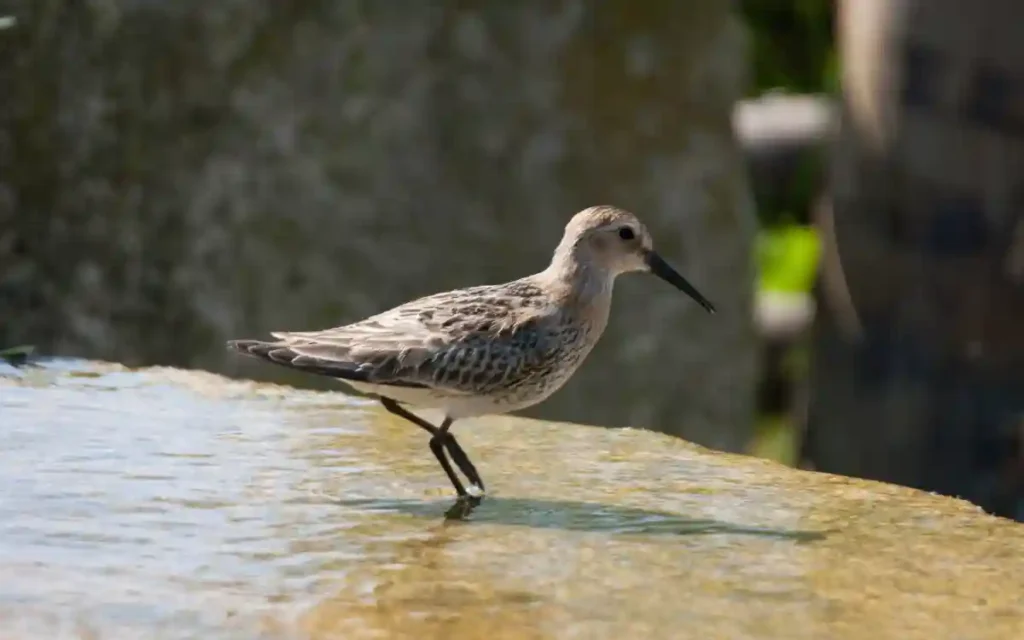
This medium-sized peep has a crisp white rump that flashes in flight. It’s a long-distance migrant rarely seen outside of migration seasons. The bill is slightly longer than average, and the bird often travels with mixed peep flocks in wetlands and shorelines.
Quick Facts:
- ID tip: White rump visible only in flight
- Migration: Breeds in Arctic, winters in South America
- Season: Best seen in spring and fall
28.Pectoral Sandpiper (Calidris melanotos)

Named for its streaked breast that ends in a sharp line above a clean belly, the Pectoral Sandpiper is medium-sized with yellowish legs. It prefers freshwater wetlands and fields during migration. Males are known for their strange, hooting courtship displays—though rarely seen in Texas.
Quick Facts:
- Markings: Clear line between streaked chest and white belly
- Habitat: Muddy fields and marshes during migration
- Call: Soft hoots during breeding season (in tundra)
29.Stilt Sandpiper (Calidris himantopus)

With long legs and a slightly down-curved bill, the Stilt Sandpiper often feeds in deeper water than other small sandpipers. Breeding birds have heavily barred underparts and a reddish tinge on the face. They’re often mistaken for dowitchers but are smaller and slimmer.
Quick Facts:
- Shape: Long-legged with slightly curved bill
- Feeding: Often wades deeper than other peeps
- Season: Common during spring and fall migrations
30.Buff-breasted Sandpiper (Calidris subruficollis)

This uniquely pale, buff-colored sandpiper prefers grassy areas rather than water edges. It stands tall and upright, with a soft, dove-like appearance. During migration, look for them in short grasslands, airfields, or even sod farms across Texas.
Quick Facts:
- Habitat: Grasslands, dry pastures, and open fields
- Posture: Upright with large eyes and pale tones
- Season: Most often seen during fall migration inland
31.Short-billed Dowitcher (Limnodromus griseus)

Short-billed Dowitchers are medium-sized shorebirds with long bills (ironically longer than most sandpipers) and rich, rusty underparts in breeding season. Despite the name, their bill is only “short” compared to their close cousin. They’re more commonly seen along the Texas coast, especially during migration, where they probe the mud rapidly like sewing machines.
Quick Facts:
- Feeding motion: Fast, sewing-machine-style probing
- Habitat: Mudflats, estuaries, and coastal marshes
- ID tip: Rusty tones and slightly shorter bill than Long-billed
32.Long-billed Dowitcher (Limnodromus scolopaceus)

This inland-favoring cousin of the Short-billed Dowitcher is slightly larger with a longer, straighter bill. Long-billed Dowitchers are common in Texas during migration and winter, especially in freshwater marshes. They have a distinct, high-pitched “keek” call that helps differentiate them from similar shorebirds.
Quick Facts:
- Call: High “keek!” sound
- Foraging habitat: Freshwater marshes and flooded fields
- Bill: Slightly longer and more uniformly straight than Short-billed
33.Wilson’s Snipe (Gallinago delicata)
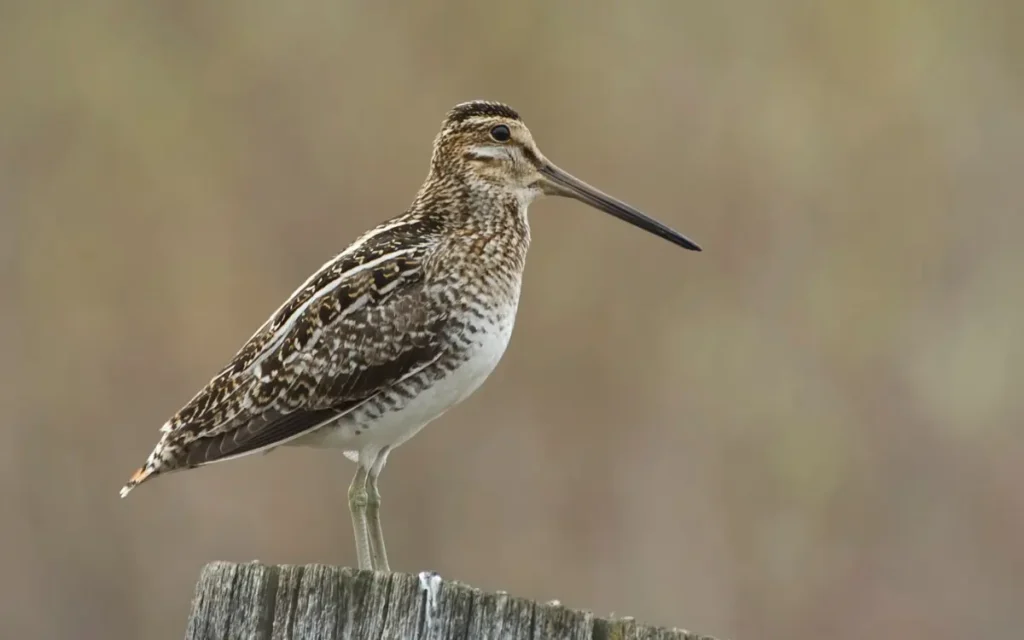
Well-camouflaged and chunky, Wilson’s Snipe is often flushed from marshy ground with a zigzag flight. It has a long, straight bill and boldly striped back and head. You’ll usually hear them before you see them, especially in wet grassy areas. Their fast flight and cryptic colors make them a challenge to spot.
Quick Facts:
- Flight: Erratic, zigzag pattern when flushed
- Habitat: Wet meadows, marshes, and roadside ditches
- ID: Bold stripes on back and head; long straight bill
34.American Woodcock (Scolopax minor)

Unlike most shorebirds, the American Woodcock prefers woodlands and moist forests. It has a round body, short neck, and long bill—with eyes positioned high and far back on its head. This oddball performs sky-dancing displays at dawn and dusk during breeding season. Though not common, they can be found in eastern Texas woodlands.
Quick Facts:
- Display: Known for aerial spring courtship flights
- Habitat: Moist woodlands and young forests
- Appearance: Chunky with a very long bill and high-set eyes
FAQ’S
What are the most common shorebirds found in Texas?
Some of the most frequently spotted shorebirds in Texas include the Killdeer, Willet, Black-necked Stilt, American Avocet, and Sanderling. These birds can be found along the coast, in marshes, and even inland during migration seasons.
Where is the best place to see shorebirds in Texas?
Top birding hotspots include:
- Bolivar Flats Shorebird Sanctuary
- South Padre Island Birding Center
- Anahuac National Wildlife Refuge
- Aransas National Wildlife Refuge These areas provide diverse habitats that attract a wide range of shorebirds year-round.
When is the best time of year to see shorebirds in Texas?
Spring (March–May) and Fall (August–October) are peak migration periods, offering the best diversity. Some species like Killdeer and Willet can also be seen year-round along the Texas coast.
How do you identify different sandpipers and plovers?
Look closely at:
- Bill shape and length (curved, straight, or drooping)
- Leg color (yellow, pink, or black)
- Body size and posture
- Behavior (tail bobbing, wave chasing, flight calls) Using a bird app like Merlin or a field guide helps with difficult IDs.
Are any Texas shorebirds endangered or protected?
Yes. The Piping Plover is federally threatened, and the Red Knot is listed as near-threatened due to habitat loss. Conservation areas and beach nesting zones are often protected—so always observe respectfully.


